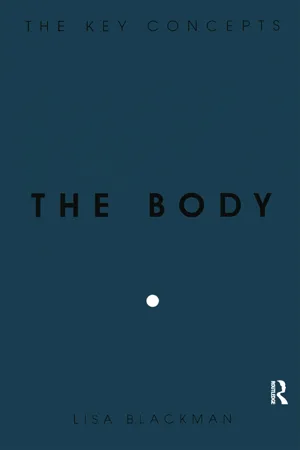
- 224 pages
- English
- ePUB (mobile friendly)
- Available on iOS & Android
About This Book
Questions around 'the body' are central to social theory. Our changing understanding of the body now challenges the ways we conceive power, ideology, subjectivity and social and cultural process. The Body: the key concepts highlights and analyses the debates which make the body central to current sociological, psychological, cultural and feminist thinking. Today, questions around the body are intrinsic to a wide range of debates - from technological developments in media and communications, to socio-cultural questions around representation, performance, class, race, gender and sexuality, to the more 'physical' concerns of health and illness, sleep, diet and eating disorders, body parts and the senses.The Body: the key concepts is the ideal introduction for any student seeking a concise and up-to-date analysis of the complex and influential debates around the body in contemporary culture.
Frequently asked questions
Information
I REGULATED AND REGULATING BODIES
INTRODUCTION
THE SOCIOLOGICAL BODY
THE NATURALISTIC BODY
DARWINISTIC EVOLUTIONISM
EUGENICS
BIOLOGISM
THE MATERIALIST BODY
Table of contents
- Cover
- Title Page
- Copyright Page
- Series Page
- Table of Contents
- Introduction: Thinking through the Body
- 1 Regulated and Regulating Bodies
- 2 Communicating Bodies
- 3 Bodies and Difference
- 4 Lived Bodies
- 5 The Body as Enactment
- Conclusion: Imagining the Future of the Body within the Academy
- Questions for Essays and Classroom Discussion
- Annotated Guide for Further Reading
- Bibliography
- Index